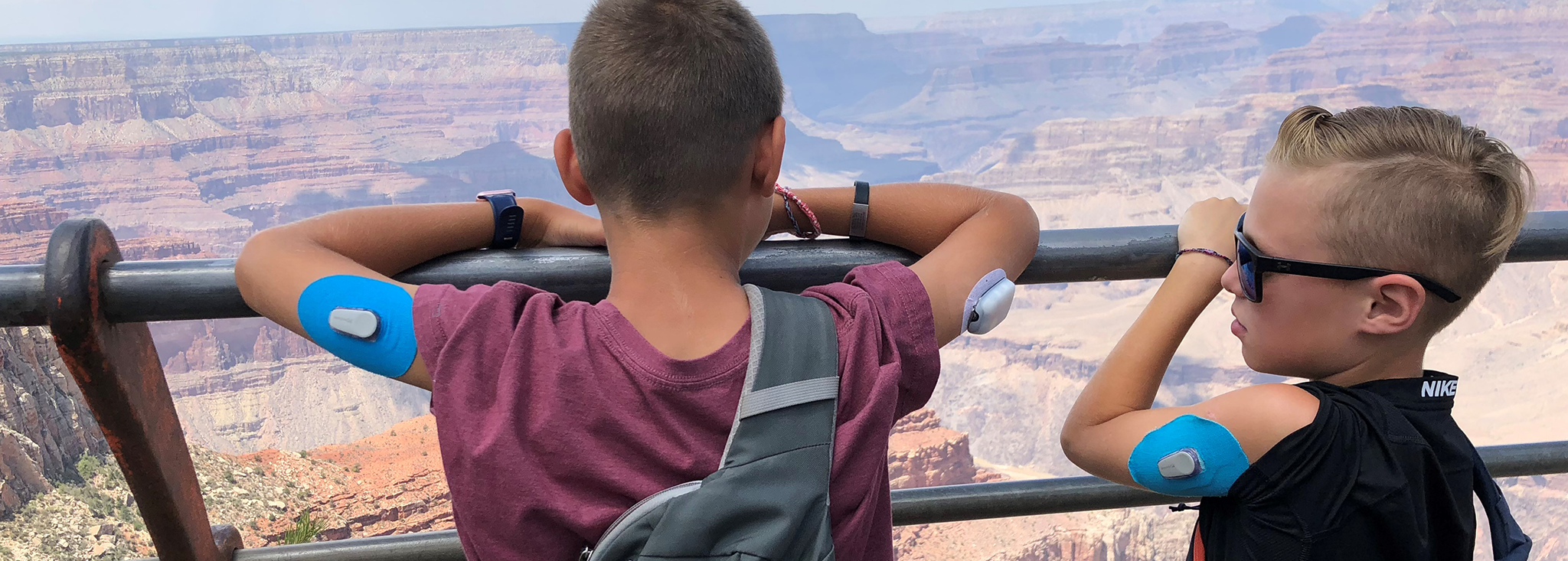The Medical ID Guide
Written by: Beyond Type 1 Editorial Team
5 minute read
June 7, 2018
If the situation ever arises, wearing a medical ID can make sure that you receive the attention and care you need in the event of an emergency. Consider these medical ID options!
If the situation ever arises, wearing a medical ID can make sure that you receive the attention and care you need in the event of an emergency. Whether you’re considering getting your first medical ID or just switching up your routine, the choices out there can be overwhelming. Beyond Type 1 is here to help!
We compiled a rundown of eight options and even consulted the Type 1 community to give you the most valuable info for this valuable tool. Some helpful suggestions we heard included: rotate between different IDs, make sure all of your medical needs are listed on the ID (not just type 1!) and do some research before settling on an ID. Check it out!
Get the job done
If utility and functionality are what you’re looking for, take a look at some of these brands:
Universal Medical ID
The story: American Medical ID and Universal Medical ID make up the company’s two arms. Shoppers can peruse a range from dog tags to sterling silver cuffs.
Pros: Selection, selection! There’s a nice breakdown between men’s, women’s and kid’s IDs, and there is another section for “other,” which offers some intriguing alternatives like USB IDs.
Cons: Although there are definitely enough choices to keep you scrolling, they might seem overwhelming—and the price range from $25 – $450 USD on the American Medical ID site is definitely broader than other options (and we realize that this “con” might actually be a plus for you shopaholics out there!).
Where to buy: Shop Universal Medical ID online from the United States, Canada, Australia, or the U.K.
MedicAlert Foundation
The story: This medical ID brand features its own 24/7 help team who use a system based on unique identification numbers on their products to share your medical history with emergency responders. MedicAlert operates worldwide, with affiliates in countries like Australia, Canada, the United States, the United Kingdom and more. It operates on a subscription model; for instance, MedicAlert membership costs $49 AUD per year in Australia.
Pros: MedicAlert products come with the support of a system that has your back in the event of an emergency; their tagline is, “Saving Lives With 24/7 Emergency Response.”
Cons: We heard from wearers of the metal options that the “nicer” bracelets are more expensive and might increase your price point if aesthetics are important.
Where to buy: Join the program and find out more information through the website.
Mediband
The story: The silicone style might attract Fitbit- and Apple Watch-wearers who are active in their daily lives with type 1. The medical information is printed right on the band, which brings the price down to less than $4 USD – Mediband also offers backs of up to 20 bands in case you need to stock up!
Pros: Medibands are reversible, and come in an array of colors. Fans of the Mediband like the waterproof feature—it’s easier to remember to wear a medical ID that you never have to take off! We also like the section on the website with bracelets in other languages and the option for a multilingual ID, which multiply the benefits of wearing a medical ID.
Cons: We hear that while they’re practical, Mediband IDs lack the shiny or stylish qualities of other brands. If you’re not used to wearing a plastic band or if you’re on the lookout for something more attractive, keep reading…
Where to buy: On the Mediband website; also available on Amazon and Instagram.
Look great doing it
Maybe you’re feeling like a funky statement piece, or you’re looking for a unique conversation starter, or you’re needing a gift to give your favorite person with diabetes (PWD) (we have some other ideas in that area, too…). If so, we’ve got you covered!
Lauren’s Hope
The story: LeAnn Carlson, founder and CEO of Lauren’s Hope Medical ID Jewelry, wrote about beautifying the medical ID world from a fashion perspective. Her company creates a wide variety of fashionable medical ID bracelets, necklaces and tags.
Pros: Need to dress up your ID for a special occasion? Lauren’s Hope offers a beautified product that takes the function of an ID to the next level. The selections include options (under $100 USD) catered to men, women, boys and girls, and there is an entire section devoted to pieces under $50.
Cons: Don’t be surprised if the style you’re looking for is out of stock due to high demand. We also hear that potential customers are concerned that such a jewelry-esque piece won’t stand out as easily to an EMT.
Where to buy: Shop online here.
Poppy Medical
The story: Founder Sarah Harmon wanted a luxury medical ID bracelet that was “shiny, and sleek, and silver and gold.” After she attended school to learn to design, create and market her own jewelry, Poppy Medical was born.
Pros: Two products, the Gabrielle and the Kendra, are directed toward female consumers. The design is indeed shiny, and sleek, and silver and gold, with the option of choosing between a small area for medical information or a larger one.
Cons: At over $100, the price point is higher for these higher-quality, luxury-style IDs than for Mediband, for instance.
Where to buy: The website, Twitter and Instagram
ROAD iD
The story: ROAD iDs boast that they have the ID “for every adventure.” Bands and badges are sold separately, and other options include necklaces, “sidekicks” that fit on your Fitbit or Apple watch, and even pet IDs!
Pros: The biggest plus for the ROAD iD lies in its flexibility: badges can hook up to your shoe or other clothing item while you’re out adventuring. Like the Mediband, the ROAD iD is waterproof. Replacement IDs seem easy to arrange through the website, and the median price point lies between $20 and $50 USD.
Cons: We hear that the aesthetic beauty of this ID (as well as with pretty much any ID!) can be compromised due to wear and tear—which is a fancy way of saying that although your medical info will remain intact, the color might not! Wearers with thin wrists may want to exercise caution, as one community member pointed out that the metal part with the engraving is heavy and slides down his arm.
Where to buy: Shop on the ROAD iD website.
Do your own thing
If wearing a physical medical ID just isn’t your vibe, you do have other options, including body art. We’ve already answered most questions you may have about getting a tattoo, and we’ve heard of examples throughout the diabetes community. A simple “type 1 diabetes” might suffice, or a tattoo of a bracelet itself, complete with the ID section, or text combined with the emergency medical symbol. Whatever you decide, we suggest making the tattoo legible and choosing a spot for it that is visible to paramedics and others in the event of an emergency, such as the inside of the wrist (close to where a medical ID bracelet might sit). In the end, you have to do what works best for you!
Read The T1D Loner by Alexi Melvin.
Related Resources

There are so many treatment options for type 2 diabetes today—it can be a little...
Read more

Noosheen Hashemi is the founder and CEO of January AI, a precision health company designed...
Read more

Jill Harrison teaches early childhood education at a community college in Auburn, Michigan, and is...
Read more


